My personal hygiene habits cost me a golden opportunity to get a long-desired look at one of the rarest whales on Earth – but my loss is the whales’ gain, so I don’t mind.
After showering and shaving one morning a few weeks ago at my vacation home on a north Florida beach, I glanced at Facebook to find an excited post from a neighbor. At 9 a.m. the neighbor had spotted a female North Atlantic right whale and her calf a short distance off the beach, just five houses down from mine. It was 9:52 a.m. when I saw her post.
I quickly grabbed some binoculars and scrambled to my upstairs deck for a better view. That perch afforded me a vista extending five miles out from shore, and a mile or more to each side. I scanned for the distinctive v-shaped blows that a right whale makes, or for a large black back with no dorsal fin, another characteristic of these marine mammals.
I saw nothing but birds and, after a long inspection, a couple of dolphins. Dolphins are nice to see, like deer in a northern backyard (when they’re not eating your shrubbery). But dolphin and deer sightings are about equally ho-hum events when you are used to them.
The Southeast coast from about Charleston, South Carolina to Cape Canaveral, Florida is the only known calving ground for the critically endangered right whales, now thought to number only a little over 400. Pregnant females, occasionally accompanied by juveniles, migrate here each winter to give birth. By March, with the strengthening spring sun and warming water, they begin the long journey north to their springtime feeding grounds in New England and summer ranges in Canada.
But three years ago there were only five births. That spring was followed by a devastating summer in which 17 right whales died, mainly from ship strikes and entanglement in fishing gear. The following season, no right whales at all were sighted in the Southeast, nor were any calves discovered later. It was starting to look as if I might never have a chance to see one of these behemoths in my Florida backyard.
Last year brought a bit of a recovery with seven births, but more mortality followed with 12 deaths in the north. This year we have had several pieces of welcome news, though partly offset by more unfortunate developments.
The good news begins with reports of 10 live births this year in the Southeast, according to CBC News in Canada. One mother and calf pair even took a sightseeing vacation to the gentle, warmer waters off Miami Beach. Such southern sojourns are not unknown, but are uncommon. The whales’ winter range typically ends a good 150 miles farther north. So I have no complaints about my whale-watching near-miss, since it is a result of the whales’ comparatively robust class of 2020.
The CBC also reported that the Canadian government is implementing new conservation rules in the country’s Atlantic provinces to protect the summering whales, which in recent years have moved northward from the Bay of Fundy into the Gulf of St. Lawrence. Fishing seasons will be adjusted and fishing areas closed entirely when whales are present; speed limits will be lowered for ships in certain areas; and the Department of Fisheries and Oceans will test new ropeless fishing gear. Ship strikes and rope entanglements are the major causes of right whale mortality, so the new rules are aimed squarely at the whales’ biggest threats. We’ll have to wait to see whether these measures succeed.
More immediately, the good news was tempered earlier in the season when one of the calves was spotted with severe injuries from a propeller strike while swimming with its mother off the coast of Georgia. Neither mother nor calf has now been reported in several weeks. The calf’s ability to survive the wounds was very much in question, and it may have been lost.
Last week an emaciated adult female was found near Nantucket with a buoy caught in its mouth, Boston public radio station WBUR reported. That whale, named Dragon by researchers, is 19 years old and has calved three times, albeit not since 2016. Losing a fertile animal her age is another blow to the species.
It remains to be seen if the whales, with a population of breeding females numbering perhaps less than 100, can sustain this year’s more vigorous reproductive pace. Perhaps better feeding condition up north are producing stronger adults who can reproduce more efficiently. However, some researchers believe this year’s traffic in the whale nursery was the result of whales taking longer intervals to get pregnant, resulting in something of a short-term traffic jam in the neonatal unit that will soon reverse.
I will keep an eye out for those whales every winter. I’ll probably keep reporting on what I see – or don’t see – in this space from time to time. It isn’t easy to maintain a long-term relationship with a party you have never even seen, but these whales need all the friends they can get. I am not about to give up on them.





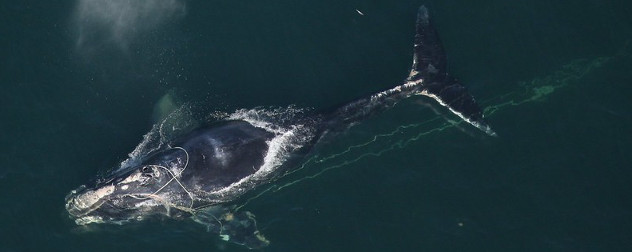
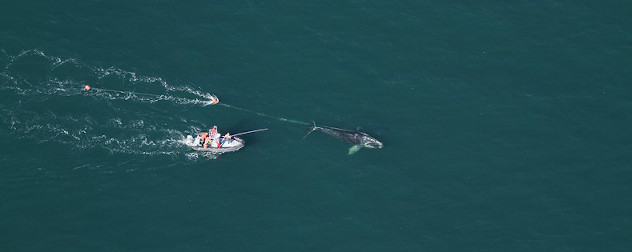

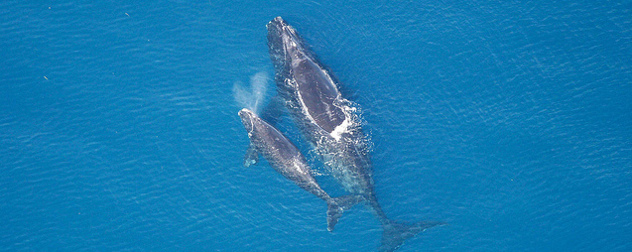
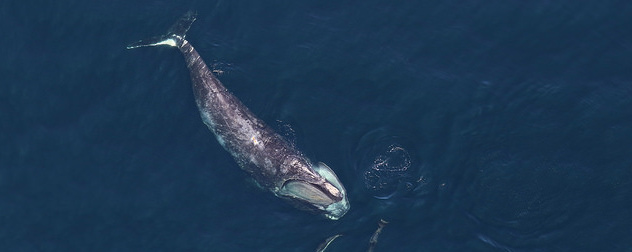
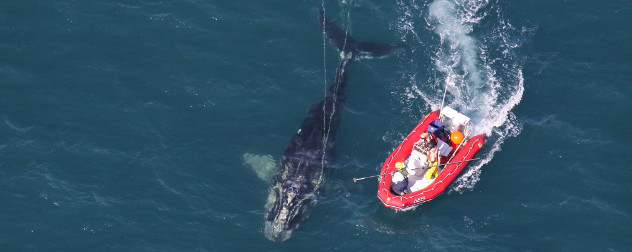
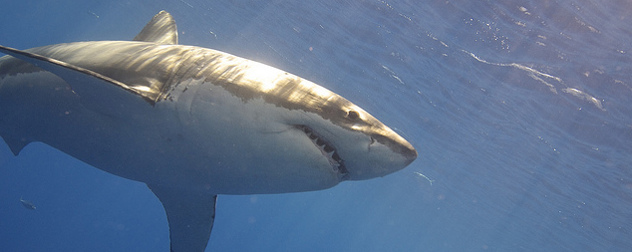



March 7, 2020 - 9:31 pm
Interesting piece, Larry. I noticed it while searching for latest news on ‘ropeless fishing’ because my company provides such gear. And there is an interesting business background story here.
Some 85% of the right whales have scars from entanglement, not surprising because their migration from Florida to and into the Gulf of St. Lawrence takes them across literally millions of buoy lines associated with the pot and trap fisheries for lobster, crab and ground fish. That fishing practice is very old and very successful, dating to 1808 when Ebenizer Thorndike of Swampscott, MA invented the lobster trap with its vertical rope and buoy for easy of hauling your catch. And the buoys, in Maine marked with the unique colors of the fisher, are the pride of fishing families and can be pretty to look at.
However, their omnipresence is not only deadly to the unlucky whale or sea turtle, or the occasional mariner who can see his drive shaft ripped out and boat sinking or caught like a fly in a web and smashed against a nearby shore. Rare but not unheard of tales when traveling these shores. They are also the source of much grief and intrigue to the fisher. All too often they will find buoys cut and traps lost to passing boats, to weather, or to the next fisher who finds practice or presence or success unacceptable and resorts to cutting them off. All too often they fall prey to another and not quite so honest fisher who might find the opportunity of a quick haul out in the fog, a handsome sum in the pocket irresistible.
But, a solution has long been at hand. All the way back in around 1995, the late Ron Firkins of Sydney (Australia), beset by gear loss from passing ships came up with an ingenious yet simple modification to Ebenezer’s invention. Stuffing that rope in a bag, topping it with hard floats and closing with a wire that would corrode away at a reasonably predictable rate, he clipped the bag to his trap by a short tether and threw everything over the side. With ships (and whales) passing safely above, Ron could now sleep soundly – for the most part. Buoys would still pop up early or late, or during a storm when out of reach. And so, Ron and his buddies decided to go high tech, resulting in a curious call I received from a fisher not long after; an interest in a device we built for scientists to recover their instruments after a deployment from the sea floor, the acoustic release.
I said this was a business story, and here is where it gets interesting. The ocean is a massive place, but it remains in many ways like the wild west, poorly monitored, poorly managed and poorly understood. While WW2 and then the early space age also resulted in much parallel investment in ‘inner space’, the technological solutions remained very expensive, cost limited often even to the Navy to say nothing of the fisher.
But, change’s been coming, in our case by an acoustic commended release that doesn’t require a motor to initiate buoy pop-up, is thus much cheaper and more reliable and caught they eye of this fisher. Before long Ron and some of the others could just steam up to a trap site, range to it on final approach verifying its presence, exact location and status, then press a button to see the buoy pop-up straight ahead a short time later. Not surprisingly, economics soon kicked in and with gear losses now much lower and catch access far more reliable and efficient, those few who did go ‘ropeless on demand’ couldn’t help but see their business grow and soon became the largest and most successful fishers in the state. Today, you can sail the coast of New South Wales seeing far fewer lobster buoys and those that are up are probably the older corroding wire pop-ups.
Sadly, in the U.S. and Canada, things have been far more contentious. Major lobster fishing associations have ‘drawn a line’ at ropeless fishing, perhaps fearing technology cost and scuttlebutt is even the loss of the ability to cut another fisher’s buoys as a form of self-regulation. Fear is in the air from those fishers who dread the coming changes and are pressuring regulators to not allow it, and those who have suffered great losses and want to go ropeless now on their own terms but are stymied by prohibitive regulation and sometimes intimidation.
In this light, the courageous decision by Canada’s Department of Fisheries and Oceans (DFO) last week to apparently allow ropeless fishing to start in the Gulf of St. Lawrence presents a potentially great step forward. Doubters aside, within just a couple of days I received the first call from a fisher at the Gulf of St. Lawrence on behalf of several of them who want to ‘go ropeless’ even this year, before the whales arrive and their waters will once more be closed to all buoys. Yes, the incentive to go fishing if you can do so without harming whales, may yet save the Right Whale form extinction. If government steps aside and truly lets this happen. While the technology is still expensive for most fisher, and perhaps still too difficult to use for some, early adopter candidates among fishers who are chomping at the bit now will quickly optimize if for their fishery while a growing market will reduce cost as it always does.
This story represents a bit of a beacon in the darkness for our oceans; perhaps one that will be just so in time to save the right whale and solve many other problems. By listening to the oceans using inexpensive, cigar sized sensors that are solar powered, drift, dive to listen and surface to satellite report and re-charge, we can find where the whales are now and where ships must slow down. We can detect illegal fishing vessels from industrial nations going dark off the shores of poorer nations, preventing depletion of resources that drive some fishers to piracy. And we can detect those pirates too.
The wild west out there then may be gone, but our fishers will ultimately gain by having a resource that will support their families for the long haul, while preserving healthy ecosystems as well as secure navigation for the planet and us all.